Kare-Raisu, known as Curry Rice in English, is a Japanese curry that’s sweeter, less spicy, and adapts a longer cooking method than most other curries.
For ease of comprehension, lets break down the basics of Japanese Curry into sections.
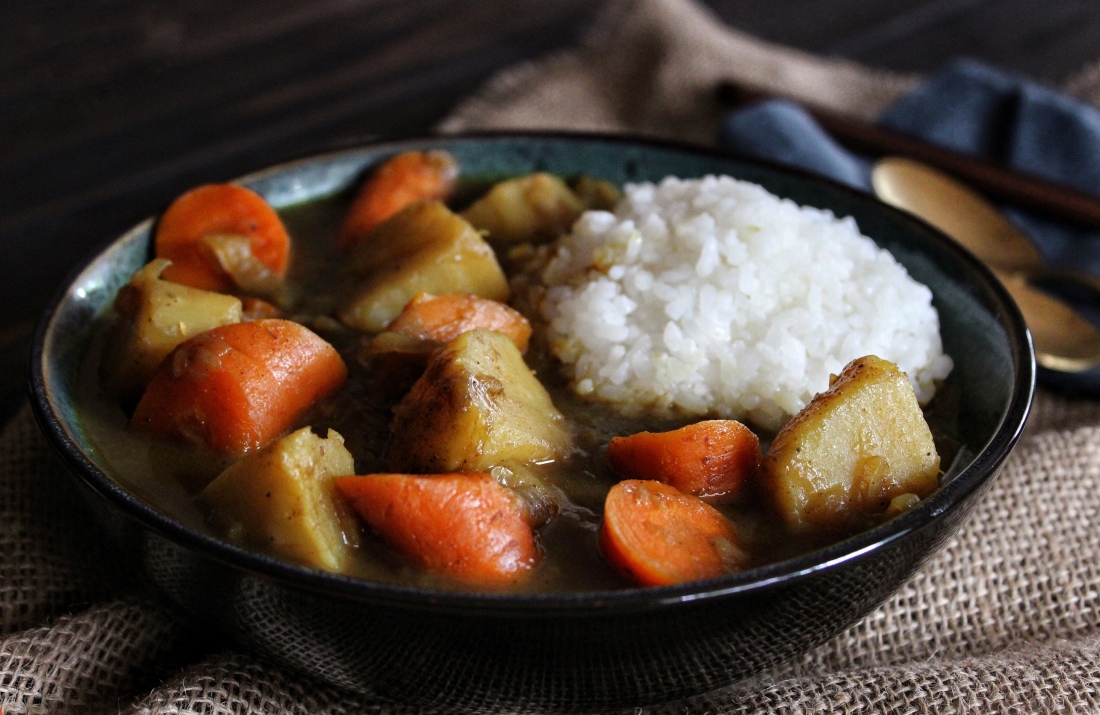
1: Caramelizing Onions
The single most important step in making Japanese curry that I can pinpoint is to caramelize onions, as their flavor is imperative to the dish. Thinly sliced, caramelized onions provide a sweet base for the broth to be built atop of as well as a signature thickness that’s akin French Onion Soup. To properly achieve this task, you’ll need: sweet onions, salt, oil, and time – it’s essential to cook the onions over relatively low heat for anywhere from 40 minutes to an hour, until they reduce to one fifth of their original size, become soft, and are golden brown.
If you have a gas stove – most of which run hot – you’ll to want to keep your heat on low to medium-low, and if you have an electric stove, you’ll want to keep your heat on medium-low to medium. Because we’re using an old, electric stove, we used medium-low heat for the first 35 minutes then medium for the last 20 minutes.
The goal of this operation is to extract the sugars contained within the onion out to the surface, which is done by withdrawing the moisture via salt, low heat, and time. Low heat – which doesn’t seal in moisture the way high heat does – salt, and time allow the onions to sweeten without burning. If you decide to rush everything else in this curry, for heaven’s sake, do not rush this step.
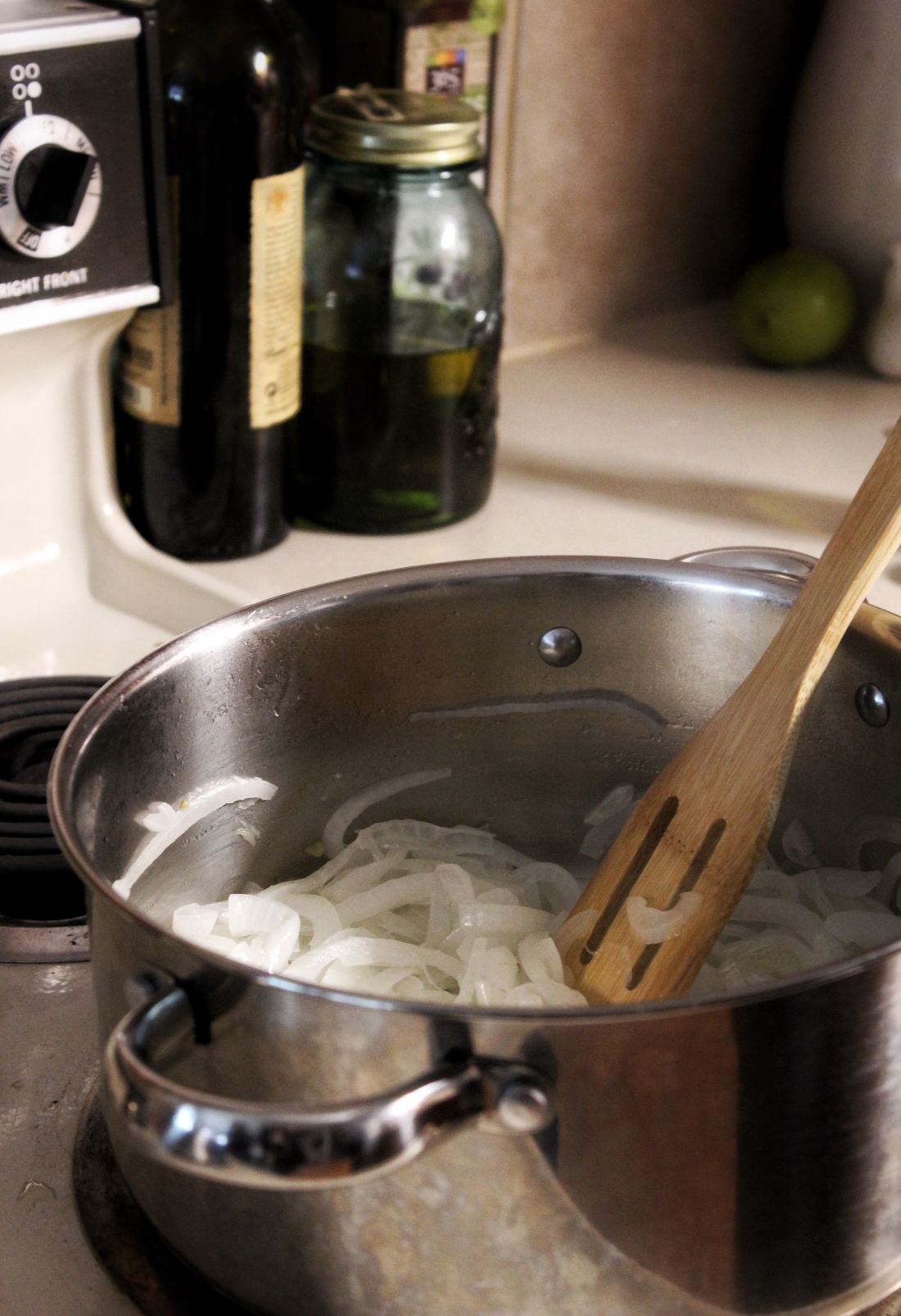

2. Tonkatsu Sauce
Another key element is the addition of tonkatsu sauce, which is a sweet and lightly tangy variant of Japanese barbecue sauce. If tonkatsu sauce can’t be found, Worcestershire sauce is used in its place for its similar sweet and tangy, umami flavor. Unfortunately for those of us who avoid added sugars, these sauces contain considerable amounts of molasses, brown sugar, or regular evaporated cane sugar.
However, I did some research on tonakatsu and Worcestershire sauce, and came to the conclusion that if the following ingredients are mixed together, the void that would be left without one of these sauces would be filled:
- Tamarind – an ingredient in most Worcestershire sauces
- Monkfruit Sweetener – in place of molasses or brown sugar found in both sauces
- Freshly Grated Ginger – found in tonkatsu sauce
- Rice Wine Vinegar – in place of apple cider vinegar in Worcestershire and mirin in tonkatsu
- Garlic powder – found in tonkastu
- A little addition of garam masala – which imparts our replacement with several of the important spices found in both sauces
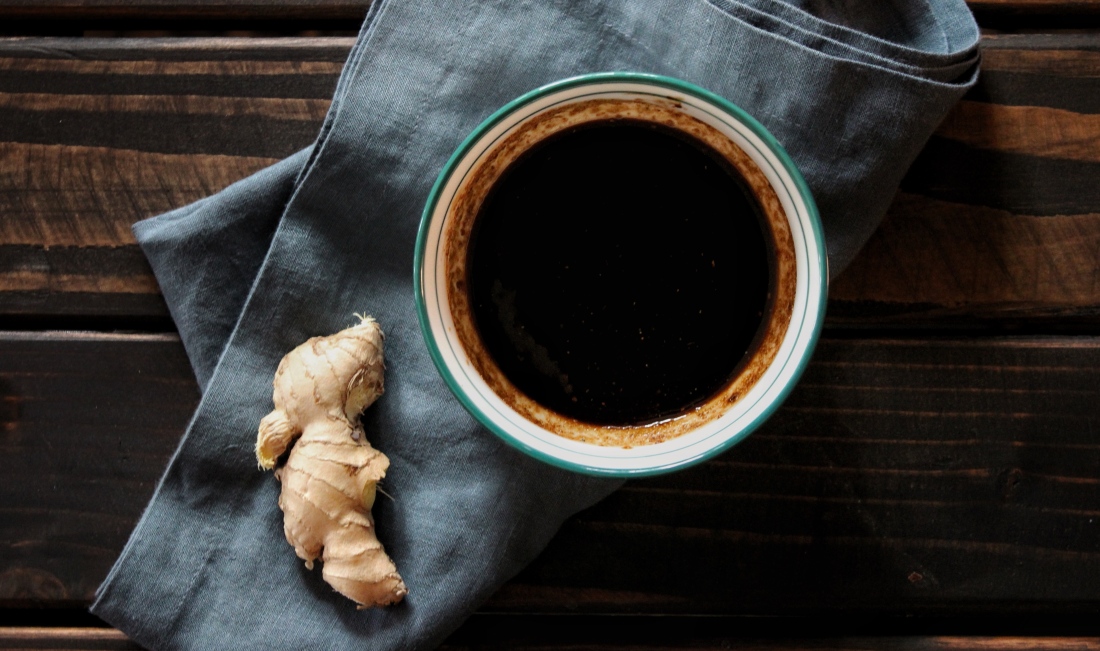
3. Roux
Perhaps the biggest difference between Japanese curry and all other curries is the addition of a roux, which is a cooked, smooth mixture of oil and starch. For Curry Rice, a brown roux is made by whisking together wheat flour and butter in a pan over medium-low heat until the mixture is nutty and brown in color. Because we don’t eat wheat flour or butter, our roux is composed of arrowroot starch and unrefined sesame oil, both of which have a neutral flavor and accomplish the same effect; albeit, the arrowroot starch roux doesn’t brown as well as an orthodox roux.
4. Seasoning
While most Japanese curries are simply seasoned with pre-made “roux blocks,” you could probably guess that I would never do that!
So, in seeking out the spices used in Japanese curry, I happily discovered that garam masala – the pungent Indian spice mixture used in our Cauliflower Tikka Masala recipe – forms the base of seasoning for most from-scratch Japanese curries. However, there is a brand of curry powder out there by the name of “S&B” that most Japanese chefs reach for when cooking this dish, and that powder contains everything that Garam Masala does, plus tumeric, which is why we add tumeric powder to our roux, alongside a heavy dose of garam masala.
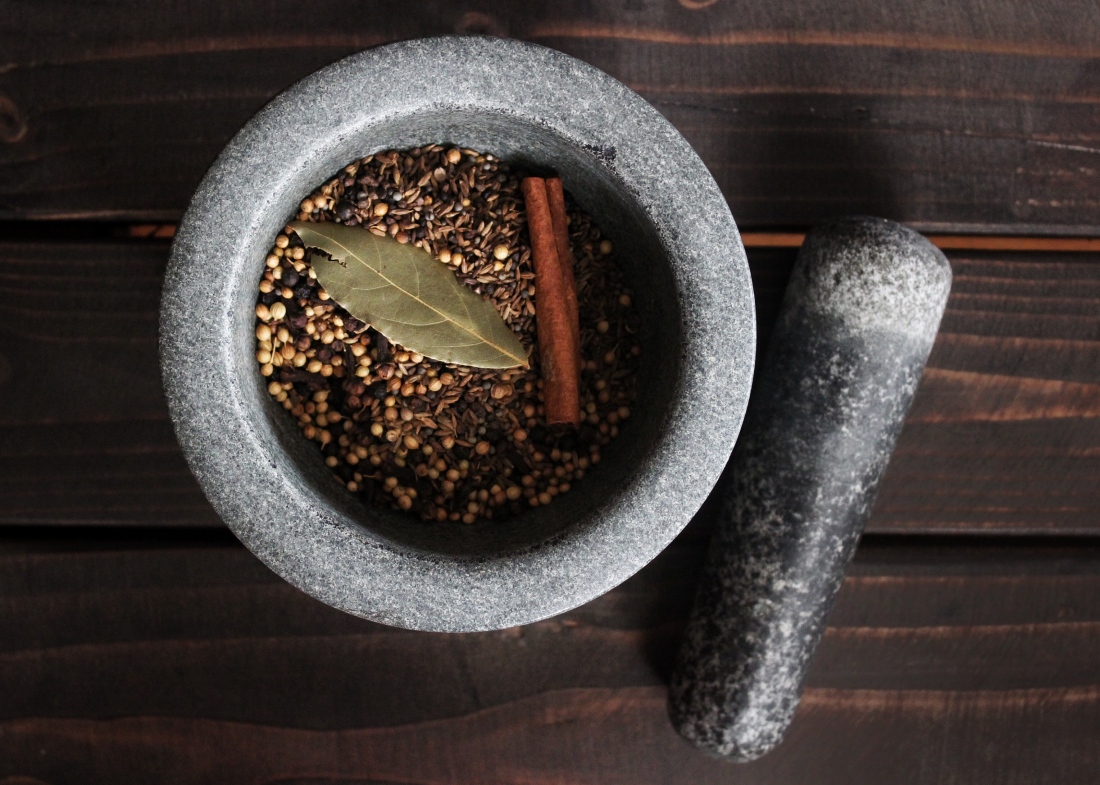
5. Veggies & Broth
Typically, Curry Rice is cooked with carrots, yukon gold potatoes, onions (as detailed above), and meat, usually chicken, pork, or beef. Because meat adds depth of flavor that’s not compensated for by the veggies, we replace half of the water with mushroom broth, which lends depth of umami that would otherwise be lacking.
To replace the potatoes, I went with the next best thing: white sweet potatoes, which are firmer and starchier than their orange & purple brothers. Several varieties of white sweet potatoes include: Hannah, White Delight, and Japanese. However, if choosing the Japanese variant, make sure you are buying the kind with purple skin and white flesh, not purple skin and purple flesh, because yes, they both exist. And if you can’t tell which is which via blemishes on their skin that reveal their interior, your grocery store produce person will surely know the answer.
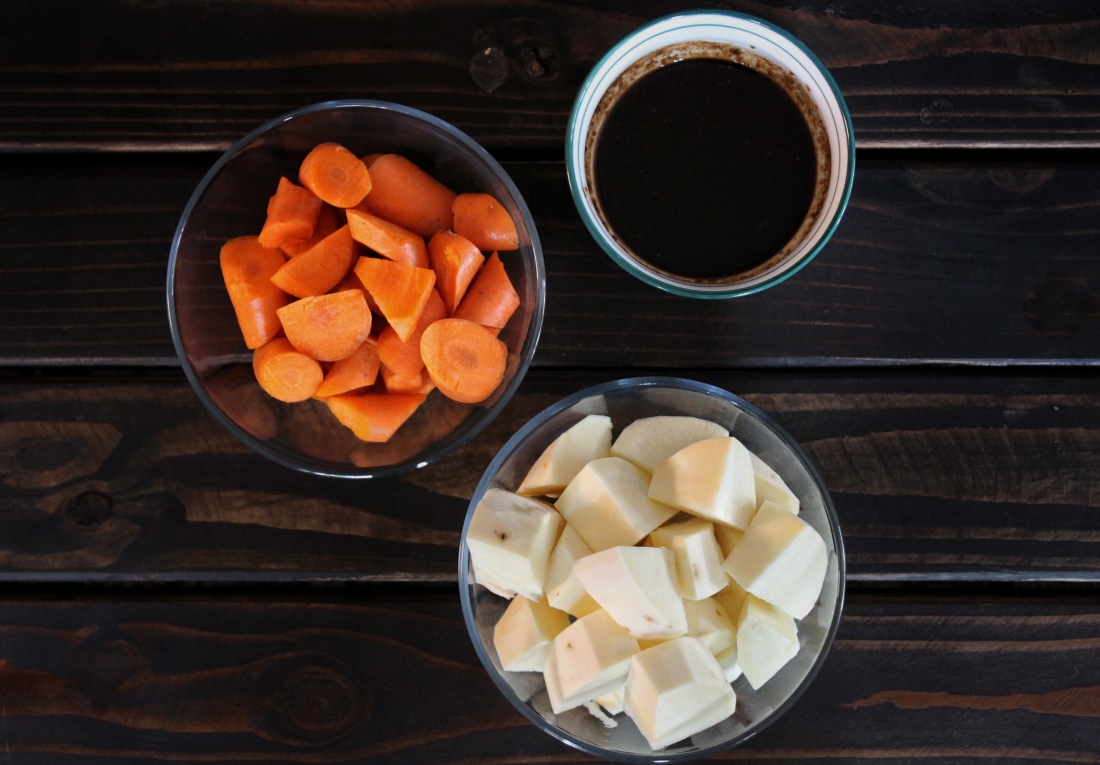
We hope you enjoy our vegan, lectin-limited take on Kare-Raisu! If you like what your taste buds are tellin’ ya, leave behind a nice rating, share your thoughts with us in the comments, or show us your creations by tagging @noeggsorham on Instagram.
All the best,
Ryan & Kim
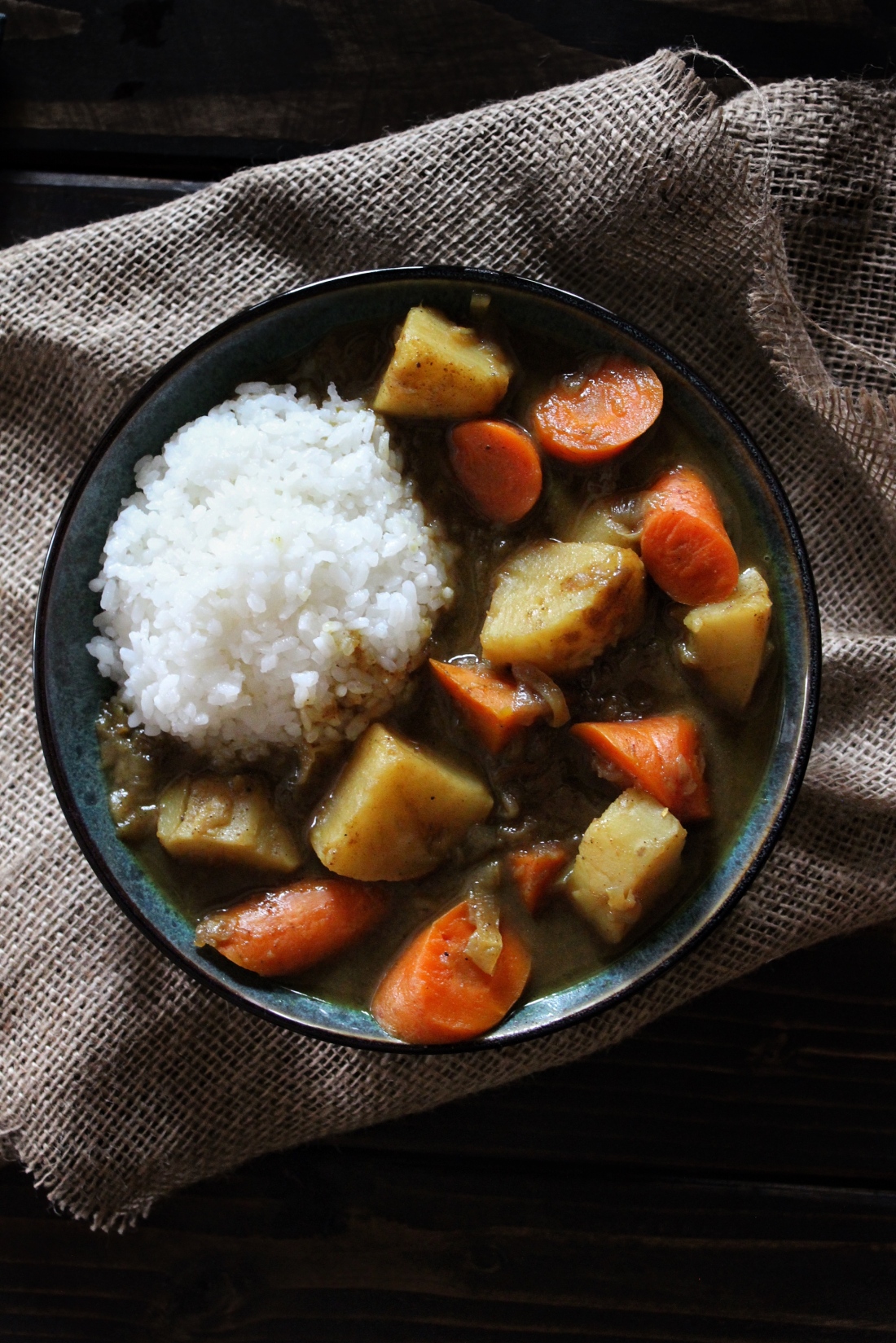
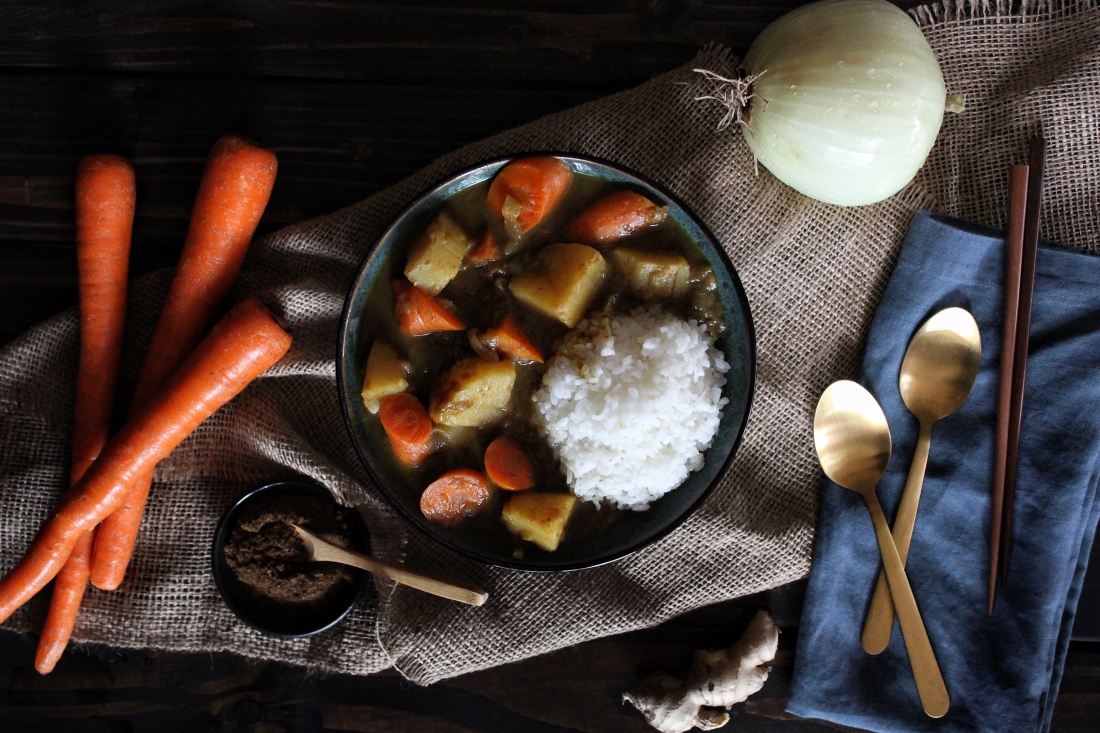
Kare Raise (Japanese Curry Rice)
Sweet, hearty, and traditionally-inspired Japanese Curry! Vegan, lectin-limited, and sugar-free
Ingredients
Tonkatsu Replacement:
- 2 tbsp golden monkfruit sweetener*
- 1 tbsp Tamari
- 1 tsp tamarind paste
- 1/2 tsp rice wine vinegar
- 1/4 tsp Garam Masala
- 1/4 tsp freshly grated ginger
- 1/8 tsp garlic powder
Curry:
- 2 large sweet onions, thinly sliced
- 2 tsp unrefined sesame oil
- Heavy pinch of salt
- 3 medium carrots, cut on a bias into large chunks (reference photo in post)
- 1 large white sweet potato, peeled and cut into large chunks (about 2 inch dices)
- 2 c mushroom broth
- 2 c water
- 1 tbsp golden monkfruit sweetener*
- 1 tsp Garam Masala
- 1/2 tsp salt
Roux:
- 3 tbsp unrefined sesame oil
- 3 tbsp arrowroot starch
- 2 tbsp tonkatsu replacement
- 1 1/2 tbsp Garam Masala
- 1/2 tsp turmeric powder
- 1/8 tsp cayenne powder
Serving:
Directions
- Whisk all ingredients for tonkatsu replacement together in a small bowl. Set aside.
- Heat a large soup pot over medium-low heat for a gas stove, or medium heat for an electric stove. Once hot, add sesame oil, onions, and a heavy pinch of salt. Cook, stirring every few minutes, until the onions are deeply browned, 40 mins – 1 hr.
- Turn heat to high and add in broth, water, and carrots and bring to a boil, scraping the bottom of the pot with a spatula to release any burnt on pieces of onion.
- Once at a boil, drop heat to medium and add in sweet potato, monkfruit sweetener, garam masala, and salt. Stir to combine, slap on a lid, and simmer for 25-30 minutes or until vegetables are fork tender.
- While the vegetables cook, prepare roux by heating a small pan or pot over medium-low to medium heat (medium-low for gas, medium for electric). Once hot, whisk together arrowroot starch and sesame oil in pan constantly for 3 minutes. After that time, whisk once every minute until lightly browned, 15-20 minutes.
- Whisking constantly, add in cayenne, garam masala, and tumeric and cook for about 1 more minute.
- Then, mix in a ladle-full of the liquid from the pot of veggies into the roux until smooth. Add in one ladle at a time, until about 1 cup of broth has been added. Take roux off the heat and set aside until ready to use.
- Once veggies are fork tender, turn heat to medium-high, stir in thinned out roux, and cook for another five 5 minutes.
- Serve alongside Resistant Starch Japanese Rice – short grain, Japanese rice cooked with coconut oil, refrigerated until cool, then reheated. Store any leftovers in an airtight container inside of the refrigerator for up to three days. Reheat in a small saucepot over medium heat until hot, about 7 minutes.
*If you can’t get your hands on Golden Monkfruit Sweetener, replace it with an equal amount of xylitol or erythritol, both of which are alcohol sugars (most of the aforementioned golden monkfruit sweetener is erythritol). Alternatively, use a small amount of stevia until desired sweetness is reached; I haven’t experimented with using stevia liquid or powder in this dish, so I can’t say how much exactly you’ll need, but start out small and increase the amount gradually because stevia is powerful stuff.
*To cook resistant starch rice: In a small pot, bring to boil 1 cup of short grain Japanese rice, 1 1/2 cups water, 1 tbsp coconut oil, and a ‘lil pinch of salt. Once at a boil, drop heat to low, slap on a lid, and cook for 15 minutes. Remove rice from heat and let sit – covered – for 10 minutes. Refrigerate cooked rice in an airtight container for at least 8 hours, then simply reheat over medium heat with a splash of water when ready to serve. The process converts simple carbs into complex carbs.

Good recipe
LikeLike